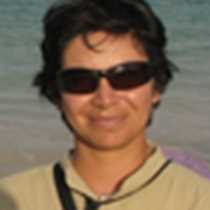We started our day in the western realm of Santiago Island. We explored Espumilla Beach in the morning and Puerto Egas in the afternoon.
In the morning, we went ashore on a pre-breakfast outing to one of the most important nesting sites for green sea turtles. As we landed, we spotted a female returning to the sea after laying her eggs. A bit further down the beach, another female covered her nest. Some of our guests spotted a couple of turtles mating close to the shore.
Every year, many female turtles come to Espumilla Beach to nest, and March is usually the most active month. After hatching, the young turtles go to the sea. When they become adults, they will return to this beach to nest.
After we left Espumilla Beach, we went snorkeling along the coast of Buccaneer Cove. This morning, conditions were great. The water was warm, and we observed several white-tipped reef sharks as well as large schools of fish. Some of our guests went kayaking or for a ride in the glass-bottom boat.
National Geographic Endeavour II repositioned for the afternoon and arrived to Puerto Egas, a former salt mine with a small village. Nobody lives there anymore, and very little is left of the settlement.
In the afternoon, we had the option to take a walk or relax on a nearby beach with Galapagos sea lions. We had a small rain. It was very relaxing to listen to both the rain and the sea. By the end of the afternoon, we had no more rain but a beautiful rainbow ended the day on Santiago Island.
Photo caption and credit: We encountered a pair of American oystercatchers as well as a brown pelican hanging out together at the end of Espumilla Beach. Photo by Gilda Gonzalez









